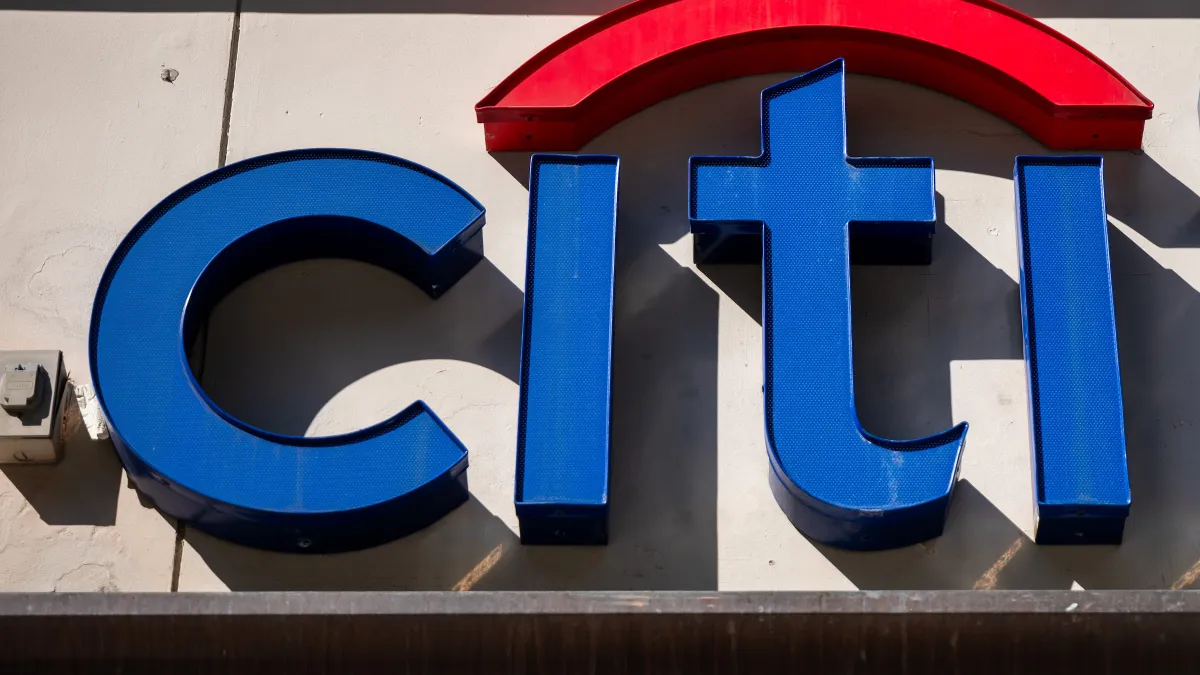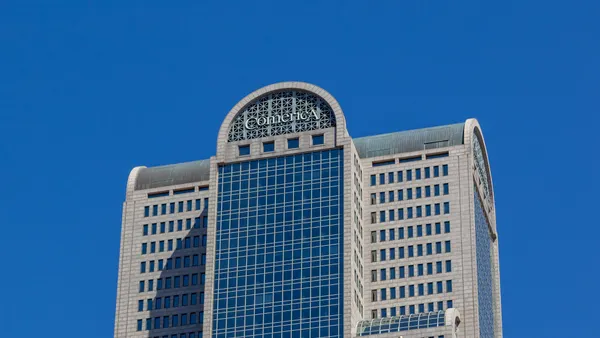Dive Brief:
- Deposits at the biggest banks in the U.S. are forecasted to drop for the first time since World War II, The Wall Street Journal reported Sunday, citing analysts.
- The pandemic has seen bank deposits skyrocket by $5 trillion, or 35%, over the past two years. Now, as the Federal Reserve ratchets up interest rates, it’s unclear whether deposits will continue to rise on an annual basis, as has been the trend every year over the past eight decades.
- But the situation for banks is not as dire as it may first appear. An analysis by Barclays found the banking industry has $8.5 trillion more in deposits than loans.
Dive Insight:
The 24 companies that comprise the KBW Nasdaq Bank Index and house 60% of the nation’s bank deposits are forecasted to see deposits decline 6% in 2022, according to The Wall Street Journal.
Bank deposits traditionally increase every year, but the surge in deposits from businesses and consumers alike that has inundated banks since the COVID-19 pandemic began is making it difficult for this year's total to outpace 2021's.
As the Fed hikes interest rates, analysts have adjusted their expectations down $1 trillion from February, when deposits were projected to rise by 3% in 2022.
It’s nebulous precisely how Fed policy will affect bank deposits, but it’s unlikely that a downward shift would have a major deleterious impact on U.S. institutions.
"These are deposits they don’t really need," Barclays analyst Jason Goldberg told The Wall Street Journal.
Citi, for instance, told the outlet it estimates banks have between $500 billion and $700 billion in excess, non-interest-paying deposits.
The rapid growth of bank deposits during the pandemic left many banks approaching regulator-imposed limits on capital.
"Raising capital against deposits and/or turning away deposits are unnatural actions for banks and cannot be good for the system in the long run," Jennifer Piepszak, JPMorgan Chase's co-CEO of consumer and community banking, told investors last year.
Consumers may opt to park their funds in money-market accounts rather than with banks, particularly as analysts expect those vehicles to raise rates in tandem with the Fed.
The average bank savings account held a 0.06% rate in late March, compared with 0.08% for money-market accounts, The Wall Street Journal reported, citing data from the Federal Deposit Insurance Corp. (FDIC).
Once loan demand and deposits come closer to equilibrium, banks may raise account interest rates.













